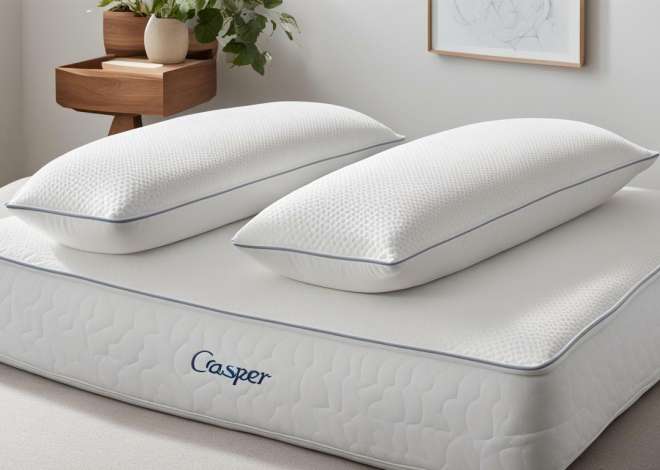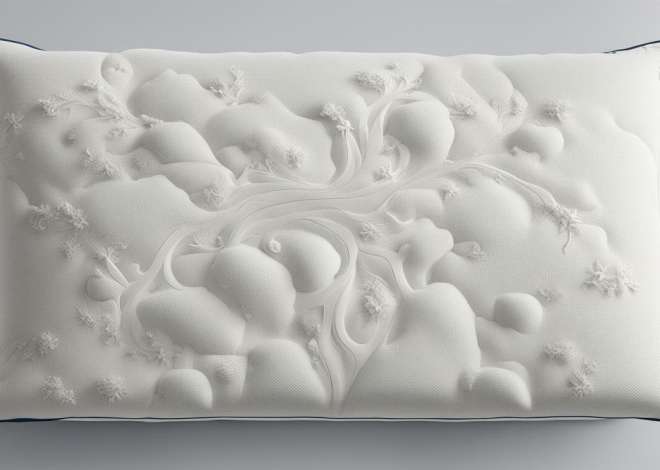
Jersey vs Cotton Pillowcases for Moisture Wicking
Are you someone who suffers from night sweats or wakes up with a sweaty pillow? Sweating is a natural process that helps regulate our body temperature, but it can be uncomfortable if our pillows become damp and uncomfortable to sleep on. This is where moisture-wicking pillowcases can come to the rescue. But with so many different materials available, it can be tough to know which one to choose. In this article, we’ll explore the differences between two popular choices for moisture-wicking pillowcases – jersey and cotton.
What is Moisture Wicking?
Before we dive into the differences between jersey and cotton pillowcases, it’s important to understand what moisture wicking means. Moisture-wicking fabric is designed to draw moisture away from the skin, to the outer layer of the fabric, where it can quickly evaporate. The result is a fabric that resists moisture buildup and feels dry and comfortable against the skin.
Moisture wicking is especially important for athletes and people who engage in physical activity. When you sweat, moisture-wicking fabric helps to keep you dry and comfortable, which can improve your performance and reduce the risk of skin irritation. Additionally, moisture-wicking fabric is often used in bedding, such as sheets and pillowcases, to help regulate body temperature and prevent night sweats.
Understanding the Importance of Choosing the Right Pillowcase for Moisture Wicking
Finding a pillowcase that can effectively wick away moisture is essential for a comfortable night’s sleep. A damp pillowcase is not only uncomfortable to sleep on, but it can also promote the growth of bacteria and fungi, leading to odors and potential health issues.
The Benefits of Using Jersey Pillowcases for Moisture Wicking
Jersey is a knit fabric that is soft, stretchy, and highly breathable. It’s made from a blend of cotton and synthetic fibers, which makes it both lightweight and durable. Jersey pillowcases are excellent for wicking away moisture, as the knit construction allows air to circulate freely. Jersey is also naturally hypoallergenic and resistant to dust mites, making it an excellent choice for people with sensitive skin or allergies.
The Advantages of Cotton Pillowcases for Moisture Wicking
Cotton is a staple fiber that is soft, absorbent, and comfortable against the skin. It’s a natural material that is highly breathable and has excellent moisture-wicking properties. Cotton pillowcases are lightweight, durable, and easy to care for. They are also hypoallergenic and gentle on the skin, making them an excellent choice for people with sensitive skin.
The Differences in Texture and Weave between Jersey and Cotton Pillowcases
One of the key differences between jersey and cotton pillowcases is the texture and weave. Jersey is a knit fabric that has a slightly stretchy, jersey-like texture. Cotton, on the other hand, is woven and has a smooth, silky feel. If you prefer a soft, cozy texture, jersey pillowcases are an excellent choice. If you prefer a smooth, silky feel, cotton pillowcases would be the better choice.
How Does Each Material Affect Moisture Wicking?
Both jersey and cotton are excellent at wicking away moisture, but in different ways. Jersey’s knit construction allows air to circulate freely, which draws moisture away from the skin and helps it evaporate quickly. Cotton’s woven texture absorbs moisture and releases it into the air through evaporation, keeping you cool and dry throughout the night.
Comparing the Breathability and Absorbency of Jersey and Cotton Pillowcases
When it comes to breathability and absorbency, both jersey and cotton pillowcases have excellent properties. Jersey is highly breathable, which provides excellent air circulation, and is also absorbent. Cotton is also highly breathable, which allows air to circulate freely and is also very absorbent.
Understanding the Durability and Longevity of Both Materials
Both jersey and cotton are durable materials that can handle frequent washing and use. However, cotton tends to be more durable than jersey, as it doesn’t stretch out of shape as easily. Cotton pillowcases can last for years, while jersey pillowcases may need to be replaced more frequently.
How to Choose the Best Pillowcase for Your Skin Type and Sleeping Habits?
When choosing the best pillowcase for your needs, it’s essential to consider your skin type and sleeping habits. If you suffer from allergies or have sensitive skin, you may want to choose a hypoallergenic fabric like cotton or jersey. If you tend to sleep hot, you may want to choose a fabric that is moisture-wicking and breathable, like cotton or jersey.
A Comprehensive Comparison between Jersey vs Cotton Pillowcases for Moisture Wicking
Both cotton and jersey are excellent choices for moisture-wicking pillowcases, with their respective advantages and disadvantages. Cotton has a smooth, silky feel and superior durability, while jersey is soft, cozy, and highly breathable. Ultimately, the choice between these two materials will depend on personal preference, skin type, and sleeping habits.
Pros and Cons of Using Jersey vs Cotton Pillowcases for Moisture Wicking
To summarize, here are the pros and cons of using jersey vs. cotton pillowcases for moisture-wicking:
Jersey Pillowcases:
- Pros:
- Soft, cozy texture
- Highly breathable
- Excellent moisture-wicking properties
- Hypoallergenic and resistant to dust mites
- Cons:
- May stretch out of shape over time
- May require more frequent replacement
Cotton Pillowcases:
- Pros:
- Smooth, silky texture
- Highly breathable and absorbent
- Excellent moisture-wicking properties
- Durable and easy to care for
- Cons:
- May not be as soft and cozy as jersey
- May not be as hypoallergenic as jersey
Now that you know the differences between jersey and cotton pillowcases for moisture-wicking, you can make an informed decision on which one best suits your needs. Happy sleeping!


